Once upon a time, fleas and ticks confined their worst activity to the warmer months. Then climate change intervened. With a lack of prolonged winter freezes to eradicate the tiny pests, dogs now face the possibility of year-round infestations. Which makes flea and tick prevention a priority. If you don’t want your dog to face possible health complications, make sure you have the proper preventatives on hand.
Fleas and Ticks
There are hundreds of species of fleas and ticks. And they’re not always easy to spot. American dog ticks and brown dog ticks are on the larger end of the spectrum. Deer ticks and seed ticks often get overlooked. They can be the size of a poppyseed, and you may not see them in your dog’s thick coat. While these parasites may be tiny, the problems they bring AREN’T.
Flea Complications
No dog ever has “just one flea.” Female fleas lay over 600 eggs throughout their lifetimes. So while you found one flea, there are thousands more hiding in your dog’s fur, the carpet, and the yard. Flea and tick prevention is just one part of the puzzle.
Left untreated, your dog may endure one or all of the following:
- Itching
- Irritation
- Hair loss
- Allergic reaction (dogs CAN be allergic to flea bites)
- Anemia
Severe infestations require blood transfusions. You don’t want that to happen. Make sure your dog receives flea and tick prevention year-round.
Tick Complications
Ticks carry diseases (referred to as tick-borne diseases). A single tick bite is enough to transmit the infection to your dog. Even worse, those same ticks can bite and infect YOU. If they hitchhike into the house, you could be the next victim.
You do NOT want your dog or yourself to fall victim to one of these diseases:
Flea and tick prevention is your first line of defense. However, you also need to do manual tick checks any time your dog ventures into areas suspicious for ticks (i.e., trails or high grass).
If you find a tick (even if you use prevention) and notice any of the following symptoms, get to a veterinarian ASAP:
- Fever
- Joint pain
- Limping (especially if it shifts between legs)
- Swollen lymph nodes
- Unusual bruising
Unfortunately, most tick-borne diseases remain within the body permanently. Therefore, flares get treated (usually with Doxycycline). If you don’t want your dog to cope with this problem, use flea and tick prevention.
Additions to Flea and Tick Prevention

If you see a flea on your dog, you already have an infestation. Applying flea and tick prevention WILL help, but you need to address the current problem. That means tackling the yard and house. (And any other pets. News flash: all mammals get fleas!)
You need to clean your house THOROUGHLY. If you have a particularly bad infestation, consider hiring a professional. You also want to treat your yard. Some pet-safe insecticides handle fleas. In addition, certain plants repel fleas if you want to add them to your gardens:
- Basil
- Catnip
- Fleawort
- Mint
- Lavender
- Marigold
- Oregano
- Rosemary
- Rue
- Sage
To keep ticks out of the yard, keep the grass trimmed short. Ticks don’t like open areas. If the shrubs stay trim, ticks will avoid your property. Keep your property fenced so wildlife stays out (ticks hitchhike on deer, raccoons, and possums). Use outdoor cat deterrents to steer feral cats out of the area. And ALWAYS check your dog for ticks when you’ve been in tick-prone areas.
Types of Flea and Tick Prevention

You have a few different choices when it comes to flea and tick prevention. The option that works for you and your dog depends on the current infestation (which may be zero – good job!), your memory, and your personal preferences. There’s no right or wrong answer. The critical part is USING flea and tick prevention.
- Collars: As you might guess, flea and tick collars get worn around the neck. The medication distributes over your dog’s body.
- Oral Pills: Flea pills attack living fleas on your dog quickly. If you KNOW your dog has fleas, this eliminates the current infestation.
- Shampoos: Again, if you know pests are present, medicated shampoos kill the fleas and ticks. They also provide soothing relief to your dog’s skin.
- Sprays: Flea and tick sprays are a little more versatile. You can not only apply them to your dog’s coat to get rid of or prevent fleas and ticks, but you can also use them around the house.
- Topicals: Topicals come in small, liquid containers you apply between the shoulder blades (since it’s the hardest place for your dog to reach). They spread over the body as they dry, distributing the medication.
Best Flea and Tick Prevention
If your dog puts even one toe outside, they need flea and tick prevention. Unfortunately, it doesn’t take long for a flea or tick to jump aboard. Once they settle in, you have a problem. It’s MUCH easier to prevent infestations than it is to treat them. With this list, you’ll find flea and tick prevention options that’ll work for you.
Best Collar Flea and Tick Prevention
Collars make simple flea and tick prevention options. You select the appropriate size for your dog (to ensure your dog won’t receive an over- or underdose of medication), then measure the collar to fit your dog’s neck. Always allow two fingers to fit underneath. Your dog receives protection for several months!
Seresto’s flea and tick prevention collar works uniquely to other flea collars. Rather than sinking low-dose pesticides into your dog’s skin, the polymer releases the active ingredients over your dog’s skin and hair. As the compounds wear out, the collar releases fresh batches for EIGHT MONTHS! There’s no odor to the collar, and it’s not greasy to the touch. There’s a two-way safety release, so you don’t need to worry about your dog getting caught on anything. The collar starts working in the first 24 hours, and fleas and ticks DON’T need to bite your dog to get affected. Best of all, the collar’s completely waterproof, allowing you to bathe your dog or let them in the pool without a worry.
We use this on our dog, and it’s worked beautifully. Fleas AND ticks are horrific in our part of Virginia, and we never see a single one.
Downsides? The cost is a little higher in the short term. However, as the collar lasts eight months, things even out. If you don’t measure the collar appropriately, it WILL rub your dog’s hair off their neck, so be careful. Also, your dog needs to be at least seven weeks old and weigh more than 18 pounds.
The Good
- Active ingredients released over 8 months
- Starts working within first 24 hours
- 2-way safety release
- Fleas and ticks don't need to bite your dog to be affected
The Bad
- Expensive
- Dogs must be 7-months-old
- Dogs must weigh more than 18 pounds
Best Oral Pill Flea Prevention
There’s nothing scarier than an overwhelming flea infestation. The dogs that come into a vet coated in flea dirt look up at you with the saddest eyes. Veterinary hospitals reach for the same thing: trusty flea pills. They’re the first line of defense to cut through dangerous infestations. While these are NOT useful as flea prevention and do NOT affect ticks, they work well to kill adult fleas. If you’re worried about your dog’s current fleas, these are the flea treatments for you.
Advantus is a newer flea pill on the market. In contrast to Capstar, it’s a flavored soft chew that your dog should find appealing. Within an hour, you’ll see the adult fleas start dropping off your dog. Again, the active ingredient only targets the fleas, leaving your dog safe. You get a little more effectiveness with Advantus: up to 96% of fleas dead within just FOUR HOURS, requiring fewer doses to tackle heavy infestations. You should still consult with a vet when using this product, though.
Downsides? You still can’t go younger than 4-weeks-old, and you have to come up to 10 pounds for this particular flea pill. And you don’t get flea and tick prevention, so invest in a preventative and clean your house and yard thoroughly. The medicine only lasts 24 hours, so if you DON’T treat the environment, your dog’s going to keep getting fleas.
The Good
- Works within 1 hour
- Within 4 hours, 96% of fleas die
The Bad
- Dogs must be 4-weeks-old
- Dogs must weigh more than 10 pounds
- NOT a flea and tick preventative
Capstar was a feature of every veterinary clinic I ever worked in. Why? Because it works FAST. Within 30 minutes, fleas start dying. The active ingredient targets the nerve transmission of the flea (and JUST the flea). In 24 hours, 90% of the fleas die and fall off. Capstar’s available without a prescription, but you should ABSOLUTELY consult with a veterinarian if you’re reaching for this flea pill.
The downsides? Your dog needs to be at least four weeks old and 2 pounds to use the flea pill (which rules out tiny puppies). If your dog weighs more than 25 pounds, you MUST speak with a vet for the proper dosage! Again, this is NOT flea and tick prevention! It only kills adult fleas, not eggs or larvae. Also, you’ll probably need more than one dose.
The Good
- Works within 30 minutes
- Within 24 hours, 90% of fleas die
The Bad
- Dogs must be 4-weeks-old
- Dogs must weigh more than 2 pounds
- If dogs weigh more than 25 pounds, need to speak with a vet for proper dosage
- NOT a flea and tick preventative
Best Shampoo Flea and Tick Prevention
You’re scrubbing the house from top to bottom. You’ve purchased your flea and tick prevention. Maybe you even used a flea pill. But your dog still looks miserable. A flea and tick shampoo might be in order. Shampoos strip the parasites from your dog’s coat while soothing the irritation. If your dog’s been scratching frantically, a little pampering might be in the cards.
If your dog has a terrible flea infestation, you need to reach for Adams Plus. In this particular shampoo, the Precor Insect Growth Regulator kills the eggs and larvae of the flea while also eradicating the adults, ticks, and lice. The Precor lasts for a full 28 days, keeping your dog safe while you get that flea and tick prevention going. Aloe, lanolin, coconut extract, and oatmeal soothe your dog’s irritated skin, and you get a minty smell.
Downsides? Again, your dog must be at least twelve weeks old. This is NOT a no-tears formula, so don’t get ANY of the shampoo near your dog’s head. And while the mint smell might be pleasant to you, it can irritate some dogs.
The Good
- Precor Insect Growth Regulator targets eggs, larvae, and adult fleas, ticks, and lice
- Formula lasts for 28 days
- Aloe, lanolin, coconut extract, and oatmeal sooth irritated skin
The Bad
- Dogs must be 12-weeks-old
- Formula is NOT tear-free
- Mint smell may irritate some dogs
You know there’s medication in your flea and tick prevention, and you may not want to add any more pesticides into the mix. TropiClean understands your concerns. Their formula uses all-natural ingredients to kill and repel fleas, ticks, and lice: clove, lemongrass, cedarwood, cinnamon, and sesame oil. As a result, your dog loses those pests and comes out smelling fresh. The mixture lasts for up to seven days, letting you treat the house in the meantime. Best of all, the shampoo DOESN’T interfere with any topical flea and tick prevention you might have applied!
The downsides? Dogs need to be at least twelve weeks old for this shampoo. You also need to keep any cats in the household AWAY (the ingredients aren’t cat-friendly).
The Good
- All-natural ingredients
- Formula lasts for 7 days
- Won't interfere with tropical flea and tick preventatives
The Bad
- Dogs must be 12-weeks-old
- Formula is NOT cat-safe
Best Spray Flea and Tick Prevention
Flea and tick prevention comes in many forms, including sprays. Sprays are versatile, allowing you to treat your dog AND your house’s interior. However, keep in mind that sprays have limited effectiveness. As they dry out, you’ll need to refresh the treatment.
Vet’s Best provides another natural alternative to pesticides in your flea and tick prevention. Their formula utilizes clove and peppermint oil to kill all flea stages and repel ticks and mosquitoes. You can use it on your dog and throughout the house, on every surface. Around the house, you can see up to 30 days of effective repellent action. And you can’t beat the pleasant scent.
Downsides? The treatment doesn’t last as long on your dog. And, again, it’s a little harder to use on dogs with thick coats. And steer clear of cats or their bedding.
The Good
- All-natural ingredients
- Formula lasts up to 30 days around the house
- Pleasant scent
The Bad
- Doesn't last as long on dogs
- Formula is NOT cat-safe
- Not the best for dogs with thick coats
Not everyone feels comfortable using chemicals or pesticides for flea and tick prevention. Zuba understands. Their flea and tick spray combines cedarwood, rosemary, peppermint, and lemongrass oils to kill all of the flea stages while also repelling ticks and even mosquitoes. You need to brush your dog’s fur against the grain for the best results and then massage the spray into their coat. The smell’s pleasant, and the ingredients are sourced from the U.S. and safe for use around children.
The downsides? If your dog has long hair or a thick coat, this spray probably won’t work. It just can’t penetrate to the skin level. You also need to keep the spray AWAY from cats.
The Good
- All-natural ingredients
- Pleasant scent
The Bad
- Need to brush dog's fur against the grain for best results
- Formula is NOT cat-safe
- Not the best for dogs with thick coats
Best Topical Flea and Tick Prevention
Topical flea and tick prevention rank at the top of most people’s lists. The simple squeeze tubes are easy to apply and last for a month. Of course, you have to remember not to bathe your dog for the first couple of days, but otherwise, they can enjoy their usual dips in the pool. Topicals span the weight range to cover every size, or you can mix and match sizes to achieve the proper dosage for giant breeds. What more could you ask for?
If your dog’s on the smaller side, Advantage II might suit your needs. They go down to three pounds, and your dog can be seven weeks old. The active ingredient targets fleas in all stages, with no need for the flea to bite your dog to go to work. You get a full month of protection from each tube.
Downsides? This is strictly a flea preventative – it won’t do anything for ticks. And, unhappily, it’s seeing some flea resistance crop up.
The Good
- Active ingredients target all life stages of fleas
- Each tube lasts 30 days
- Fleas don't need to bite your dog to be affected
The Bad
- Dogs must be at least 7-weeks-old
- Dogs need to weigh more than 3 pounds
- Doesn't protect against ticks
Frontline Plus rings a bell with most owners. The topical features two active ingredients that go to work within the first four hours. After 12 hours, 100% of the fleas are dead! All flea life stages get equal treatment, and ticks suffer the same fate. There’s no need for the flea to bite your dog, either – the medication works on contact.
The downsides? Unfortunately, the frequent use of Frontline Plus is leading to flea resistance. Your dog needs to weigh at least 5 pounds and be eight weeks old. Also, the active ingredients don’t prevent ticks from biting initially, though it WILL kill them.
The Good
- Active ingredients go to work within 4 hours
- After 12 hours, 100% of fleas are dead
- Fleas don't need to bite your dog to be affected
The Bad
- Dogs must be at least 8-weeks-old
- Dogs need to weigh more than 5 pounds
- Doesn't prevent ticks from biting
Want flea and tick prevention for your little dog? K9 Advantix to the rescue! Your dog can weigh four pounds and be just seven weeks old. The active ingredients kill the entire lifecycle of the flea while also repelling ticks, mosquitoes, biting flies, and lice. The medicine goes to work within 12 hours, and it lasts a full 30 days.
So what are the downsides? Advantix II contains permethrin, which is TOXIC to cats. You need to separate any cats in the household from your dog while it dries, and NEVER apply this product to a cat! Don’t let your kids handle the dog while it’s wet, either. If your dog has sensitive skin, the chemicals may be too much for them.
The Good
- Active ingredients target all life stages of fleas, repel ticks, mosquitoes, biting flies, and lice
- Starts working within 12 hours
- Fleas don't need to bite your dog to be affected
The Bad
- Dogs must be at least 7-weeks-old
- Dogs need to weigh more than 4 pounds
- Active ingredients are TOXIC to cats
No Itching Allowed
Fleas and ticks are here to stay, unfortunately. So if you want to prevent your dog from possible health complications, make sure you use flea and tick prevention throughout the year. That simple investment will save them – and you – a lot of headaches.
And it’s cheaper than putting your property in a giant plastic bubble.


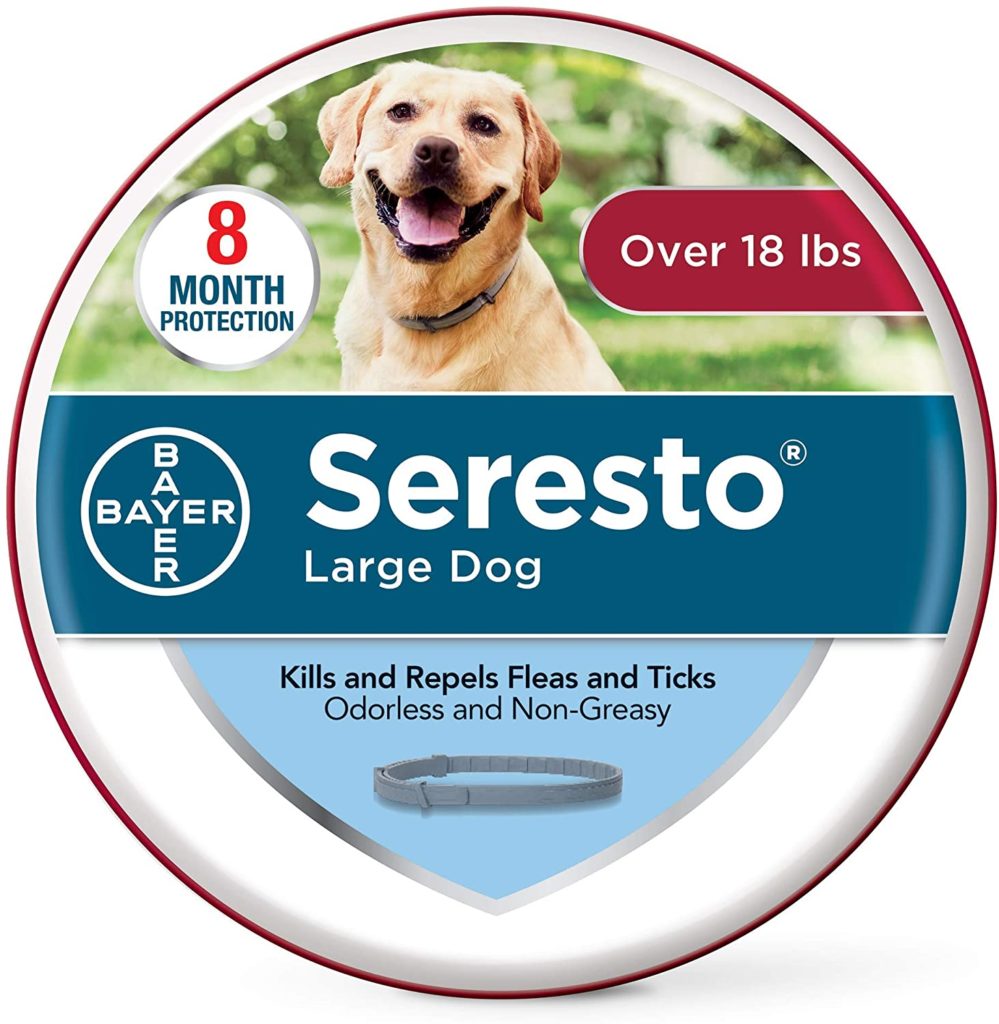
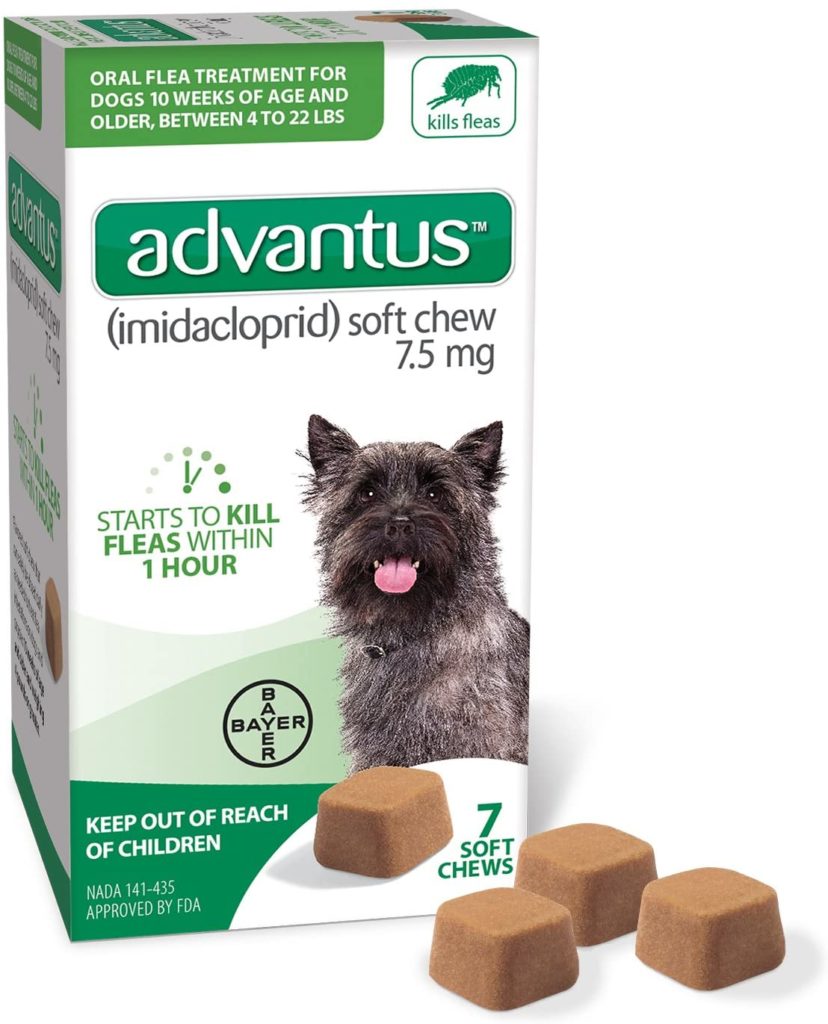
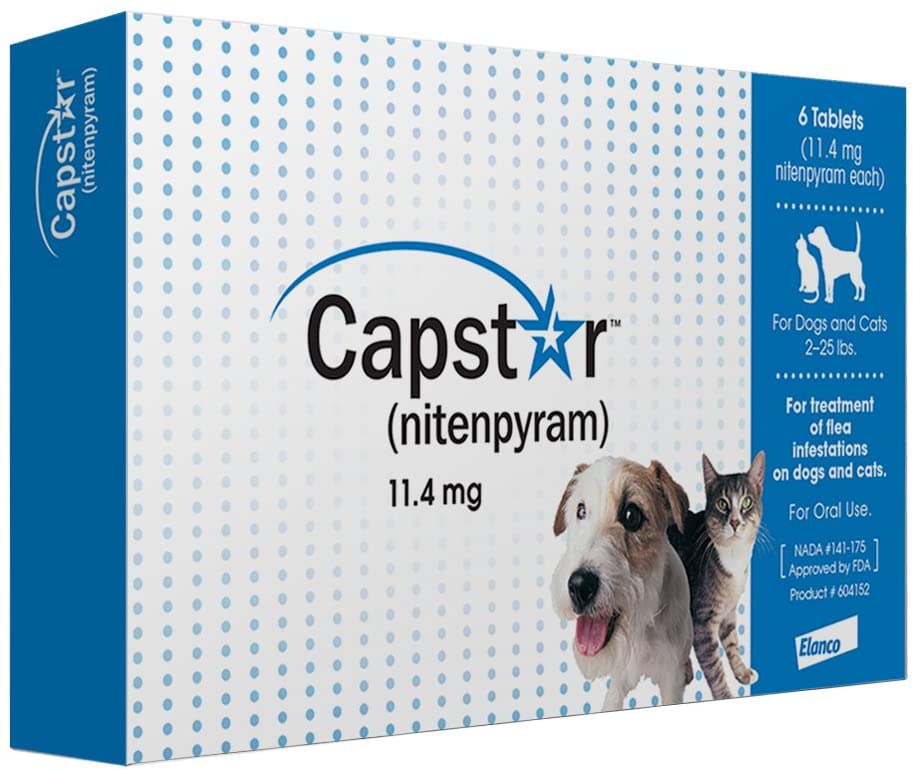


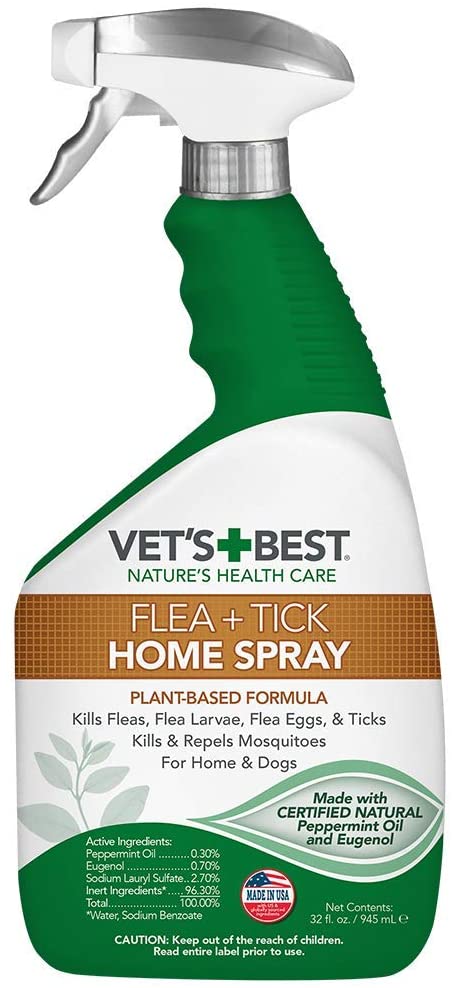
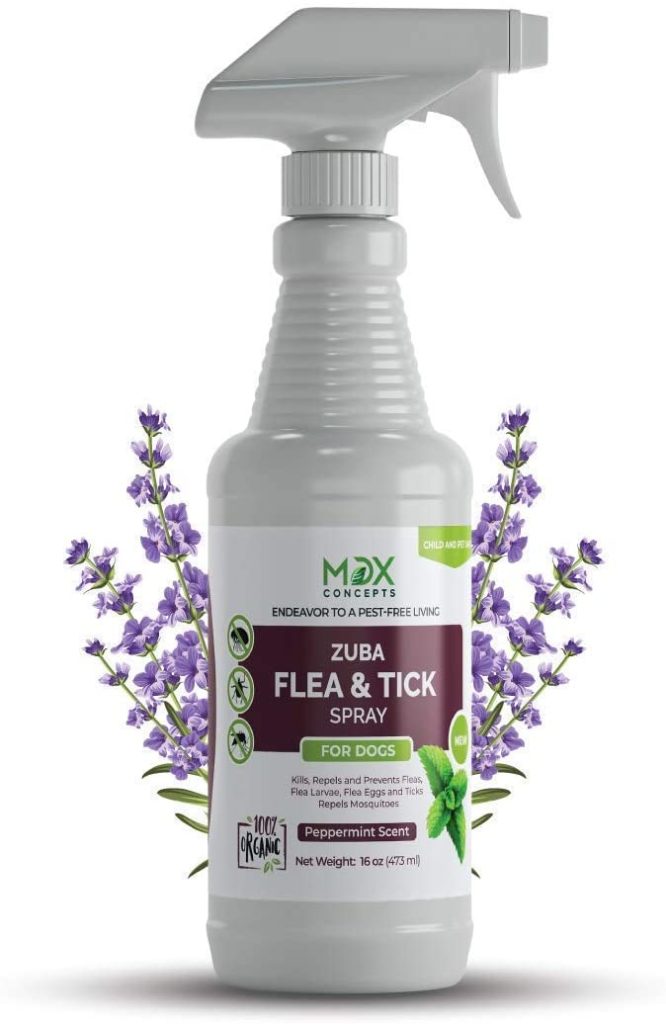
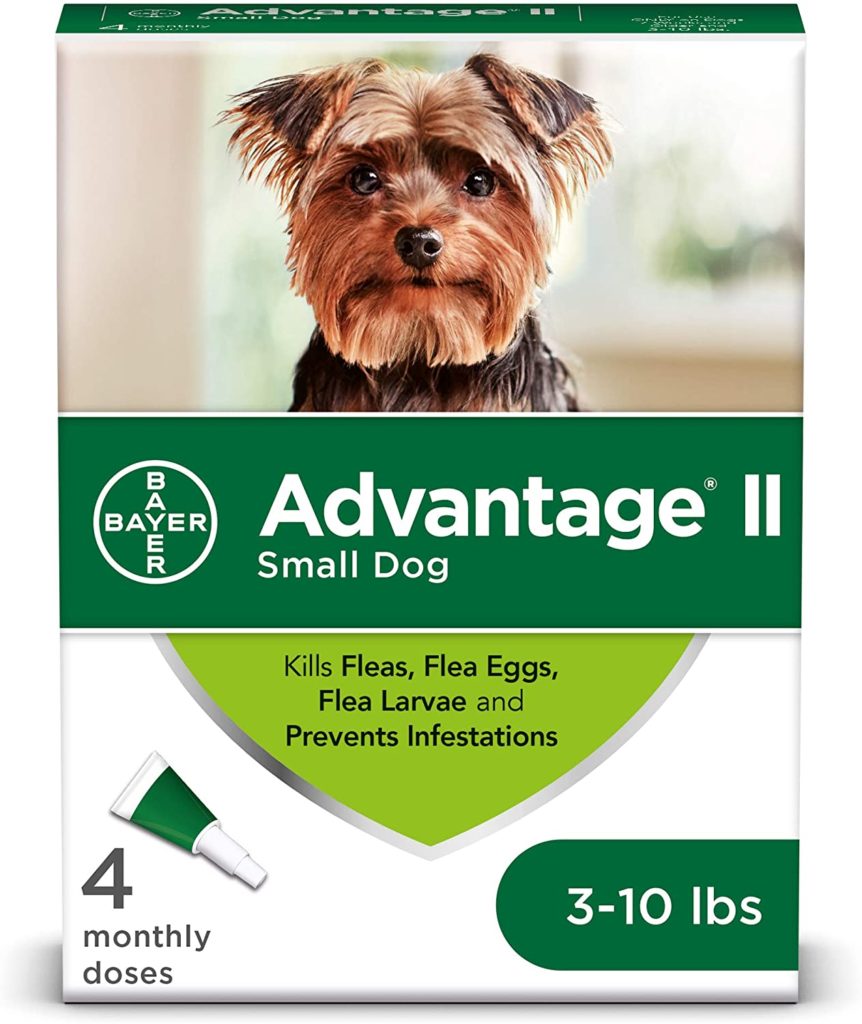
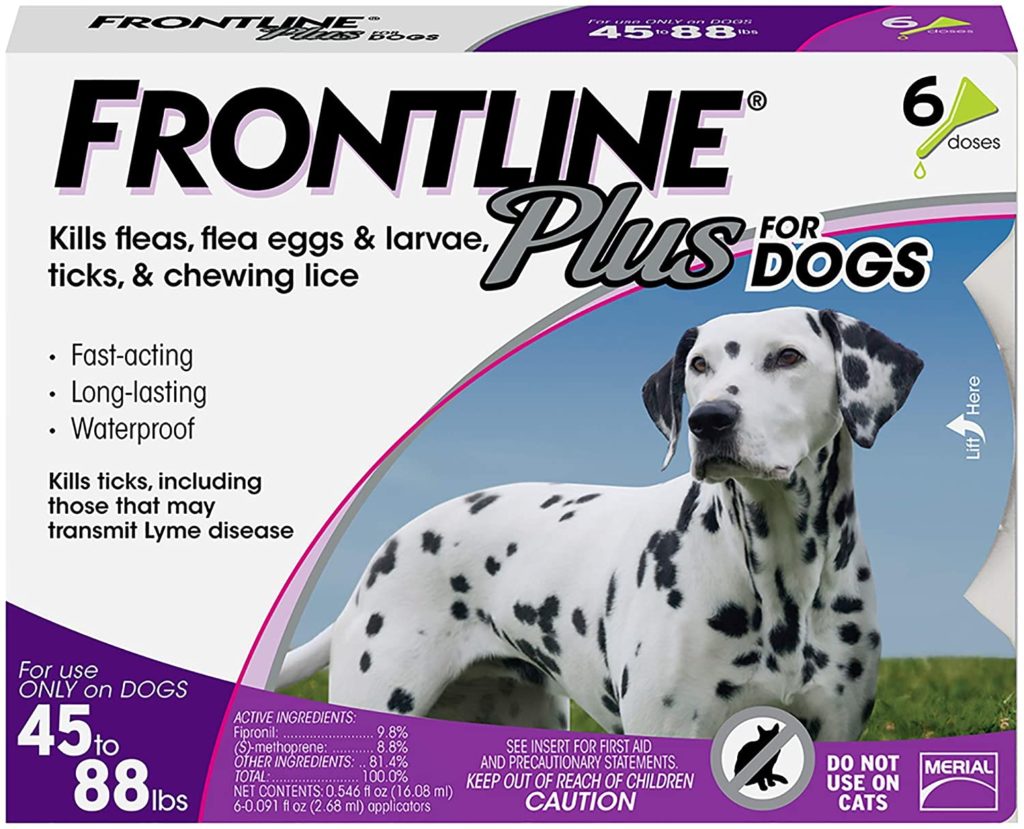
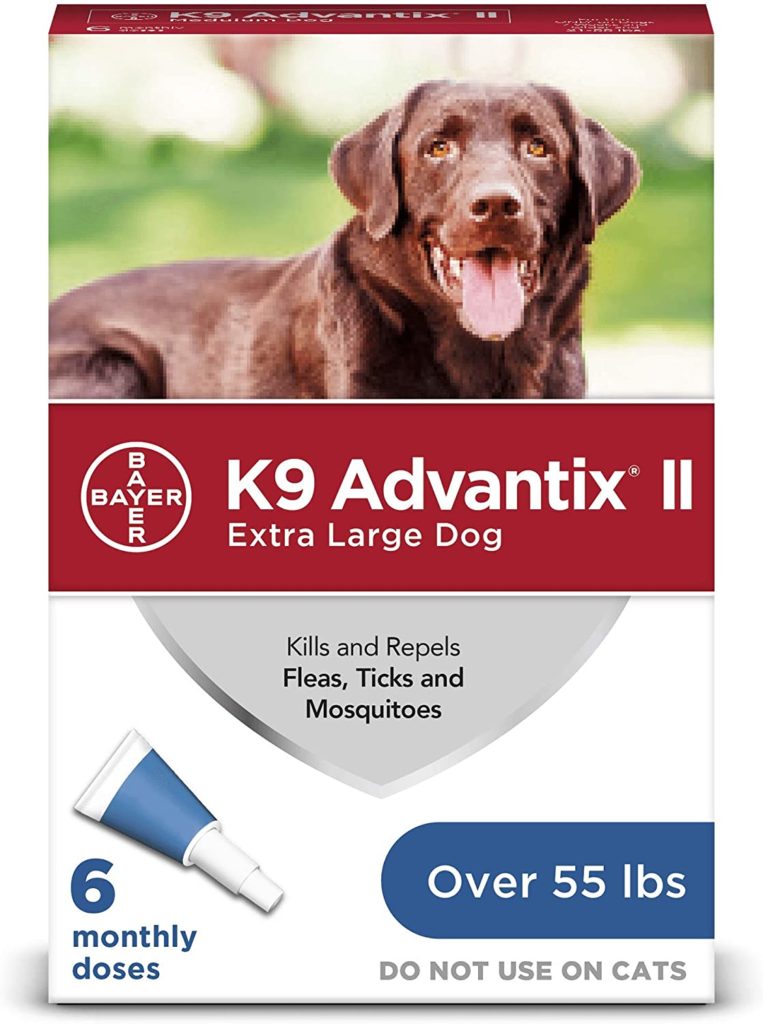




No comment yet, add your voice below!